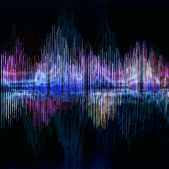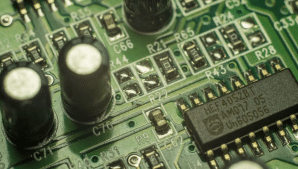Background With the trending small size of electronic devices coupled with higher data speeds, there is a merging of the increasing physical closeness among components and the shrinking wavelengths associated with higher speeds. As wavelengths shrink, they approach the physical dimensions of components and devices, which result in increased “antenna effect” of noise. … [Read more...]
What is an EMC Risk Analysis?
Introduction The European EMC Directive (2014/30/EU) was updated in 2014, replacing the old directive (2008/108/EC) and became mandatory from April 2016 for any new product entering the EU from that date onwards. The change of directive was aimed at aligning the wording and terminology to ensure it was consistent with other CE Marking directives and implement standard text … [Read more...]
Cost-Effective Applications of EMI Gaskets
Introduction EMI gaskets are used extensively by the electrical/electronic industry to assist in complying with the various EMI radiated emission requirements. These requirements include compliance to DoD TEMPEST and EMI, and FCC and EU EMI test limits. As a rule of thumb the radiated emission TEMPEST requirements are about two orders of magnitude (40 dB) more stringent than … [Read more...]
Measuring Shielding Effectiveness with Two Near Field Probes
Introduction Sometimes you may find yourself needing to make a quick check on the shielding effectiveness (SE) of a material, such as plated plastic or shield gasket material. It’s possible to set up a quick measurement setup using near field probes by using a couple H-field (for magnetic field SE) or E-field (for E-field SE). You’ll also need a spectrum analyzer with … [Read more...]
5 Ways Signal Noise Can Impact Electrical Equipment
Accurate data acquisition is often critical in various engineering and technical projects. However, a pervasive yet often-overlooked issue that arises in the system is signal noise. This unwanted electrical interference, originating from multiple sources, can corrupt measurements, hinder communication, and compromise equipment integrity. Recognizing the Symptoms: … [Read more...]
EMC and EMI Simulation for Launchers and Satellites
By: Yannis Braux and Stephen Murray CST Computer Simulation Technology Introduction EMC and EMI analysis plays an important role in ensuring the correct functioning of electronic systems and guaranteeing reliability throughout their lifetimes. This task is all the more difficult and crucial when the system is complex or exists in a challenging EM environment. This … [Read more...]
A Circuit Theory Approach to Calculating the Attenuation of Shielding Barriers
Abstract There are two commonly used methods for approximating the attenuation of shielding barriers. This approximation is defined as shielding effectiveness (SE) for shielding materials used in the design of shielded enclosures. Both methods use wave theory and quasi-stationary assumptions. One of the methods uses Maxwell’s equations to estimate the shielding, and the other … [Read more...]
Wireless Network Interference and Optimization
Introduction With the proliferation of embedded wireless systems in all imaginable products, comes the risk of increasing interference and resulting slowdown in data transfer. As we transition to a more mobile and connected society, the number of Wi-Fi (home appliances and control) and Bluetooth-enabled devices (speakers, headset, watches, etc.) is rapidly increasing. Add … [Read more...]
How to Choose Particle-Filled Silicones to Meet Multiple Design Requirements
Many electronic designs need shielding materials that combine resistance to electromagnetic interference (EMI) with other application-specific requirements. For example, the EMI gaskets that are used in military touchscreens need to attenuate EMI emissions, provide electrical conductivity, and ensure environmental sealing. These shielding gaskets also must also cushion the unit … [Read more...]
Does Your Automotive Printed Circuit Board Have Too Many Grounds?
Abstract One of the most widespread design defects in automotive printed circuit boards is the lack of an established high-frequency reference ground. This problem is exacerbated by a tendency among automotive design engineers to cut up solid current return planes in an attempt to establish “noisy” and “quiet” grounds. Introduction Too often, the designers of automotive … [Read more...]
- « Previous Page
- 1
- …
- 3
- 4
- 5
- 6
- 7
- …
- 72
- Next Page »














